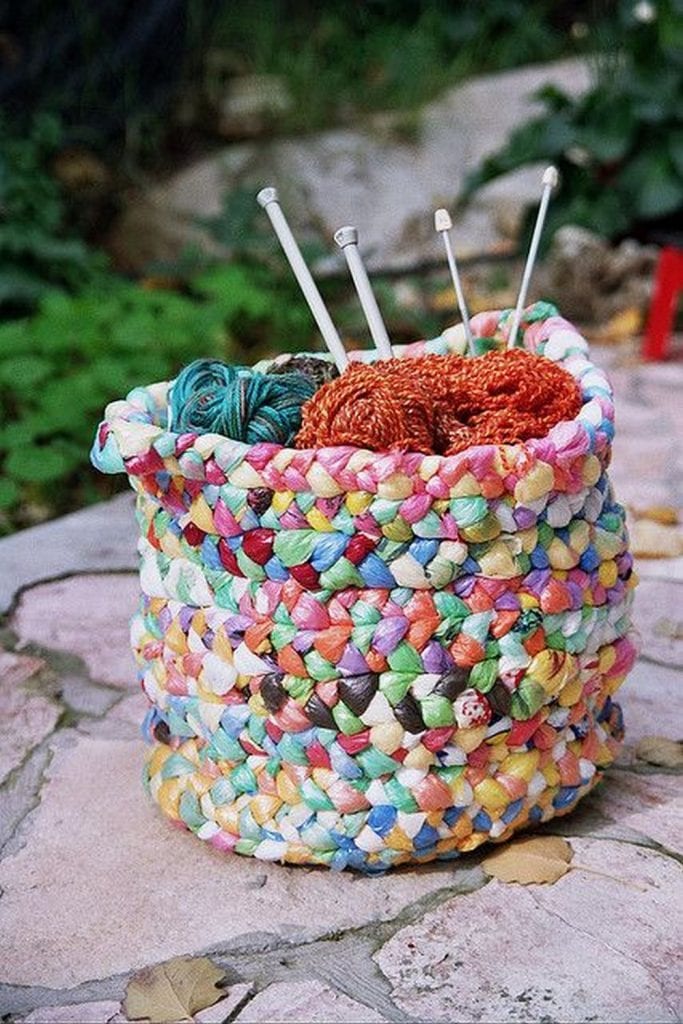Last Updated on April 15, 2024 by Team Ideas24
There’s been a call to minimize the use of plastic bags. While most stores have started using paper or eco-friendly bags, there is still a lot left in most homes. If you’re one of them, here’s a bit of good news for you. Instead of throwing them away, you can easily turn them into a basket.

These plastic bag baskets may be used for different purposes, depending on how big you make them. There are basket plastic bags used as a hamper for soiled clothes. Others use them as shopping bags. You can also make small ones holding fruit and vegetables.
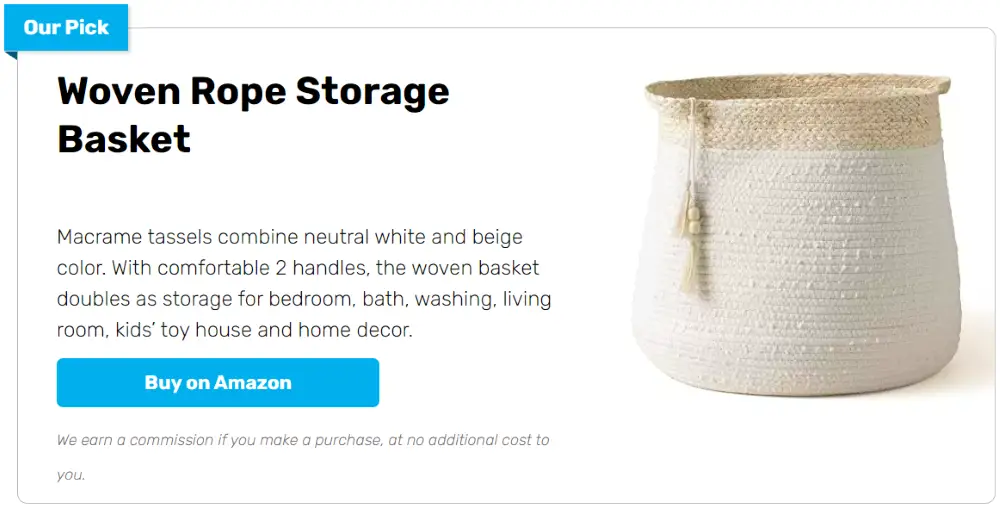
This is a DIY recycling project that hits several birds with one stone. First, it promotes effective recycling. Second, it gives you something that is both beautiful and functional. And lastly, it’s good for the environment.
Get started on this project today and you’ll have plenty you can give away as gifts.
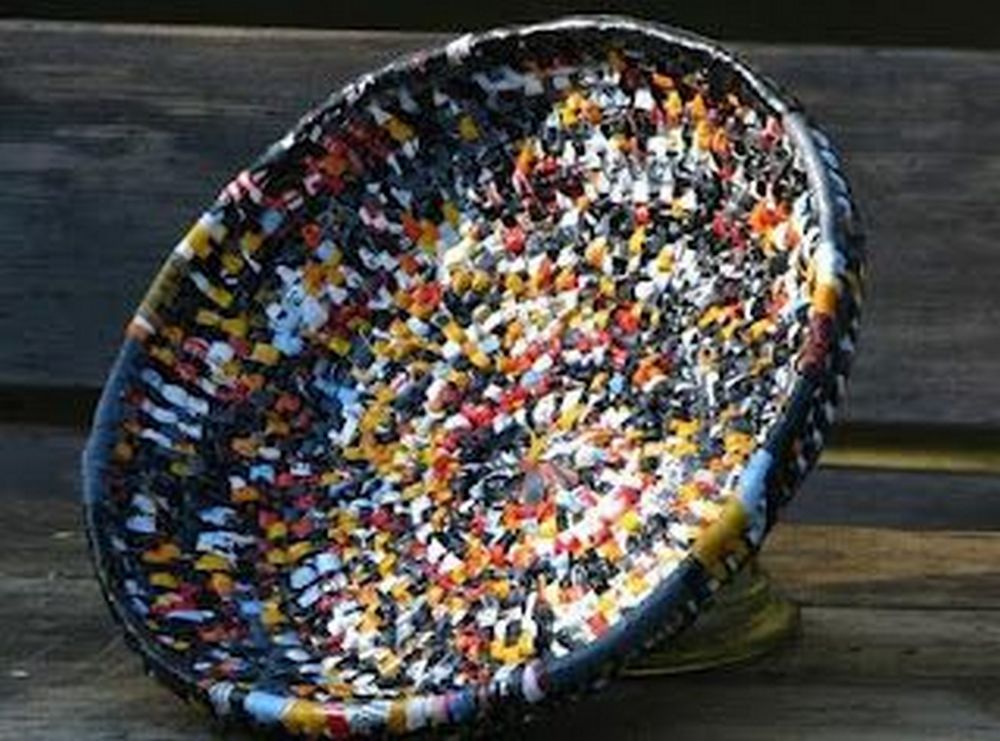
Contents [show]
Building a Plastic Bag Basket
Materials
- white thread
- plastic bags of all types
Tools
- sewing needles (sharp/heavy-duty ones work best)
- a thimble
Instructions
Step 1: Prepare Your Plastic Bags
- Collect various plastic bags. For a more colorful basket, use bags of different colors.
- Flatten out each bag and trim off the handles and the bottom seam to create a large rectangle.
- Cut the bags into strips about 1-2 inches wide. The width can vary depending on how tight you want the weave of your basket.
Step 2: Spinning The Plastic Yarn
- Make a long strip of yarn by tying the pieces of plastic to each of their ends. Make sure to tie them securely with small knots, which can be hidden as you weave.
Step 3: Begin Weaving
- Start by folding a strip into a loop, securing the end with a piece of thread.
- Use the sewing needle and thread to begin weaving the plastic yarn around the loop. Continue to add more loops around the initial central loop, stitching them together as you go.
- Keep the tension consistent as you weave to maintain an even shape.
Step 4: Build the Sides
- Once the base of your basket is the desired size, start building up the sides.
- Continue to weave in a circular pattern but begin stacking the weaving above the base layer to form the walls of the basket.
- Use the thimble to protect your finger when pushing the needle through the thick layers of plastic.
Step 5: Secure the Edges
- When your basket is as tall as you want it, finish off the edges by folding the plastic yarn inward and stitching it down to create a smooth and sturdy rim.
- Secure the final end of the plastic yarn with several stitches to ensure it doesn’t unravel.
Step 6: Add Finishing Touches
- Get rid of loose ends by trimming them.
- You can add embellishments such as a woven handle or decorative stitches with a contrasting color of thread.
Plastic Bag Basket Design Ideas
Click on any image to start the lightbox display. Use your Esc key to close the lightbox.
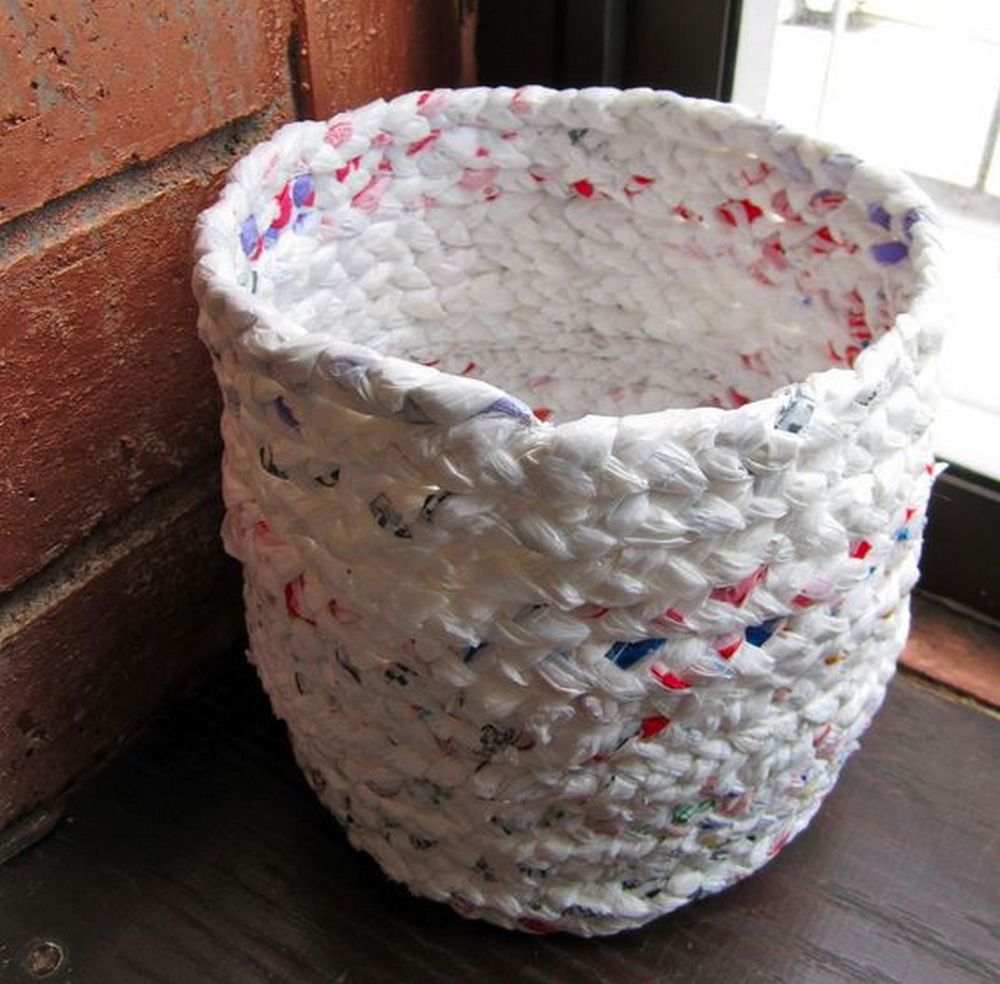
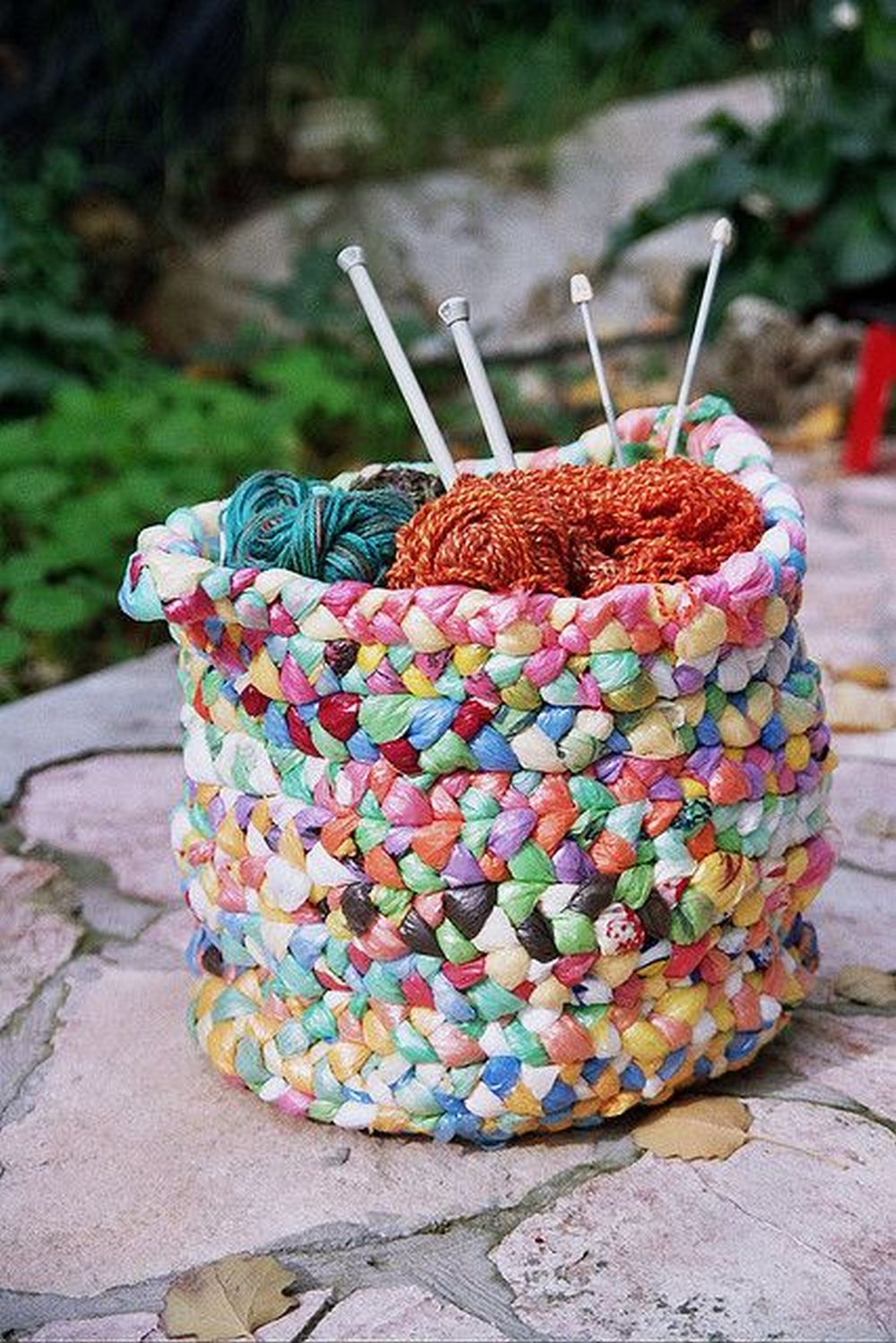
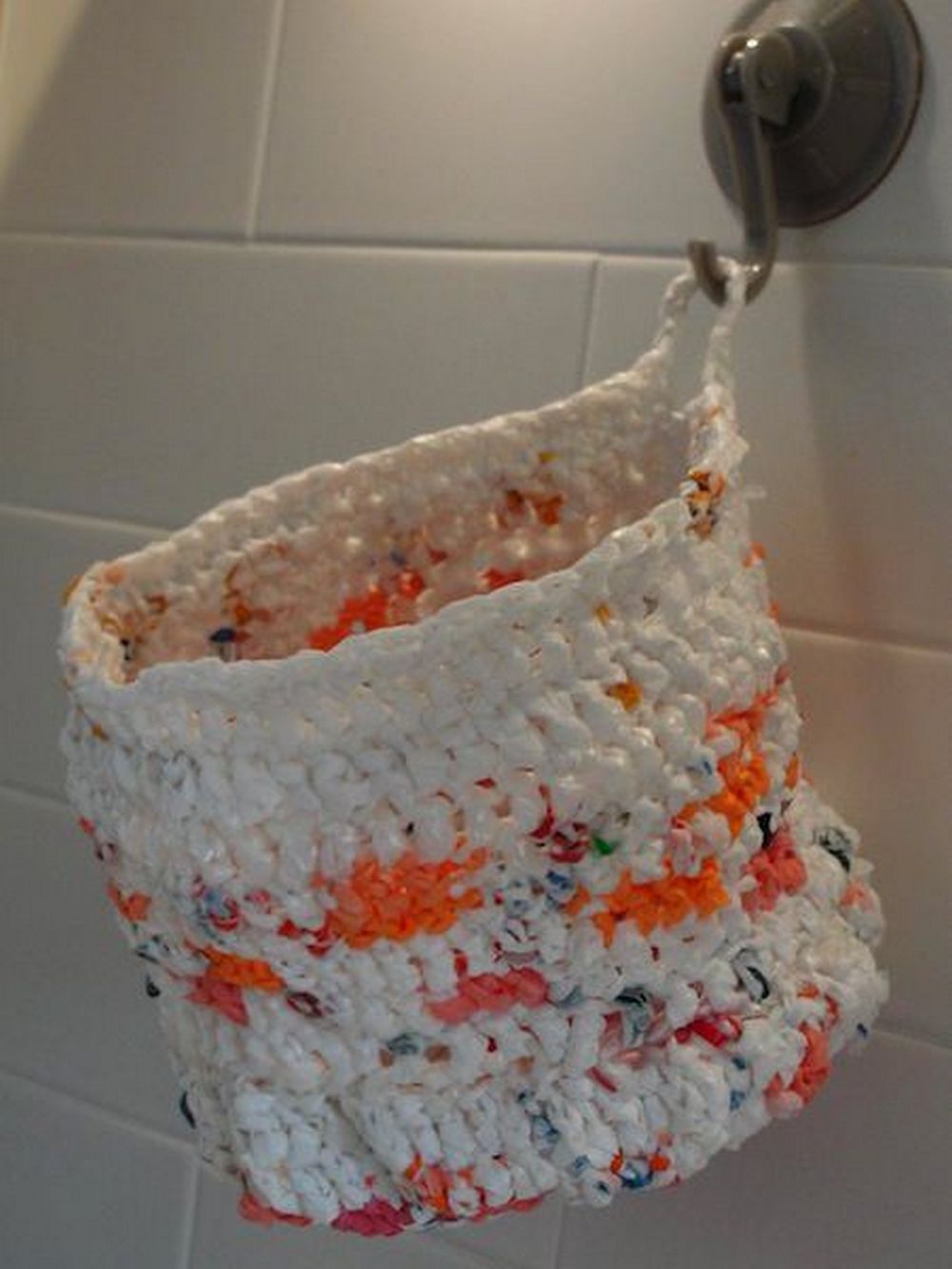
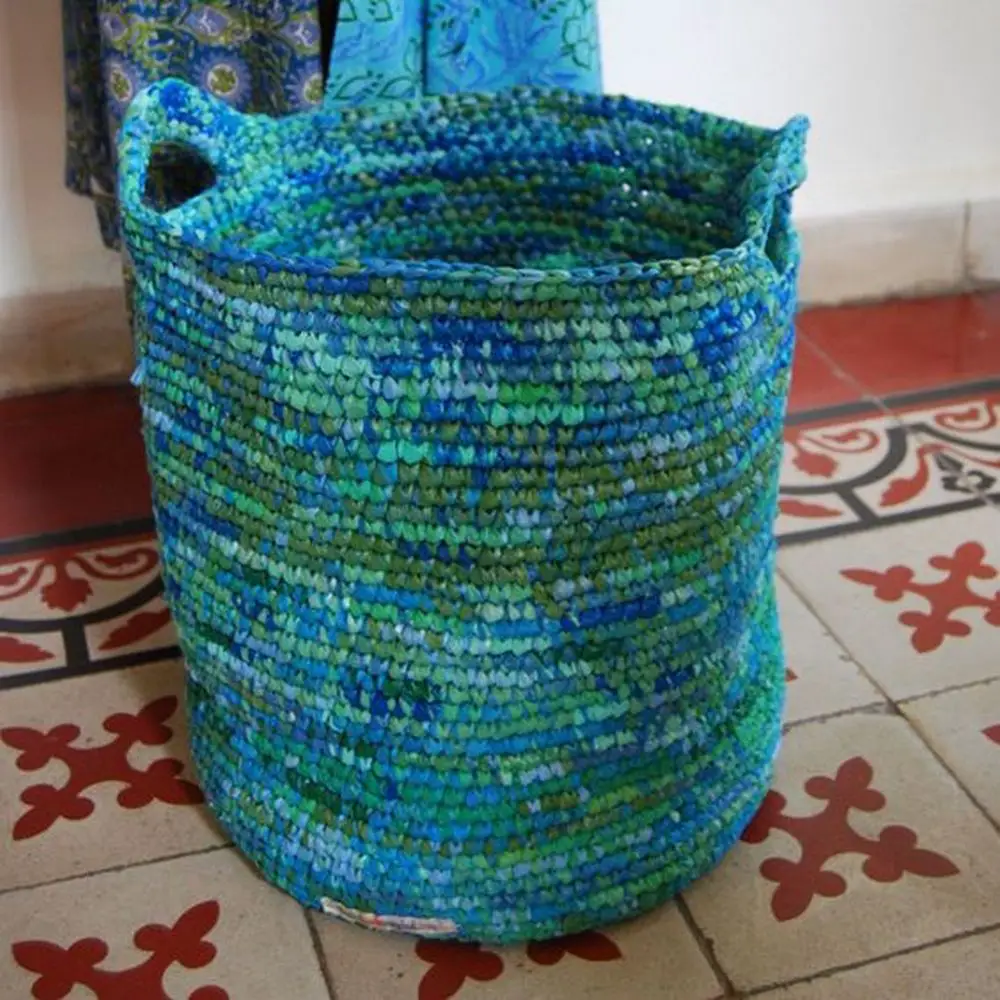
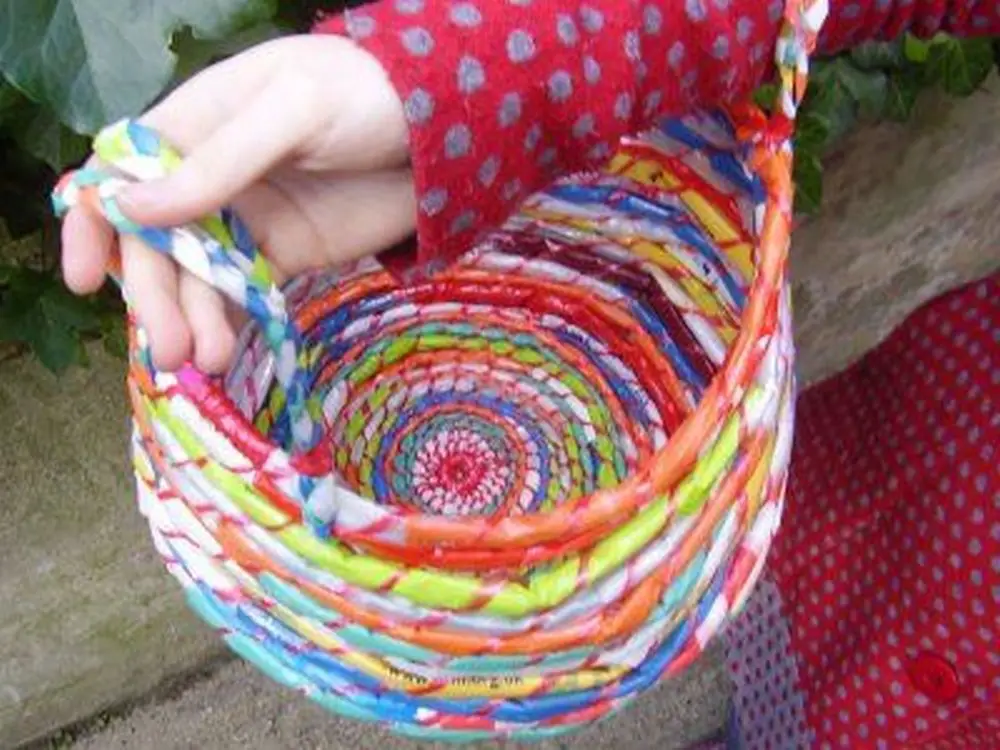
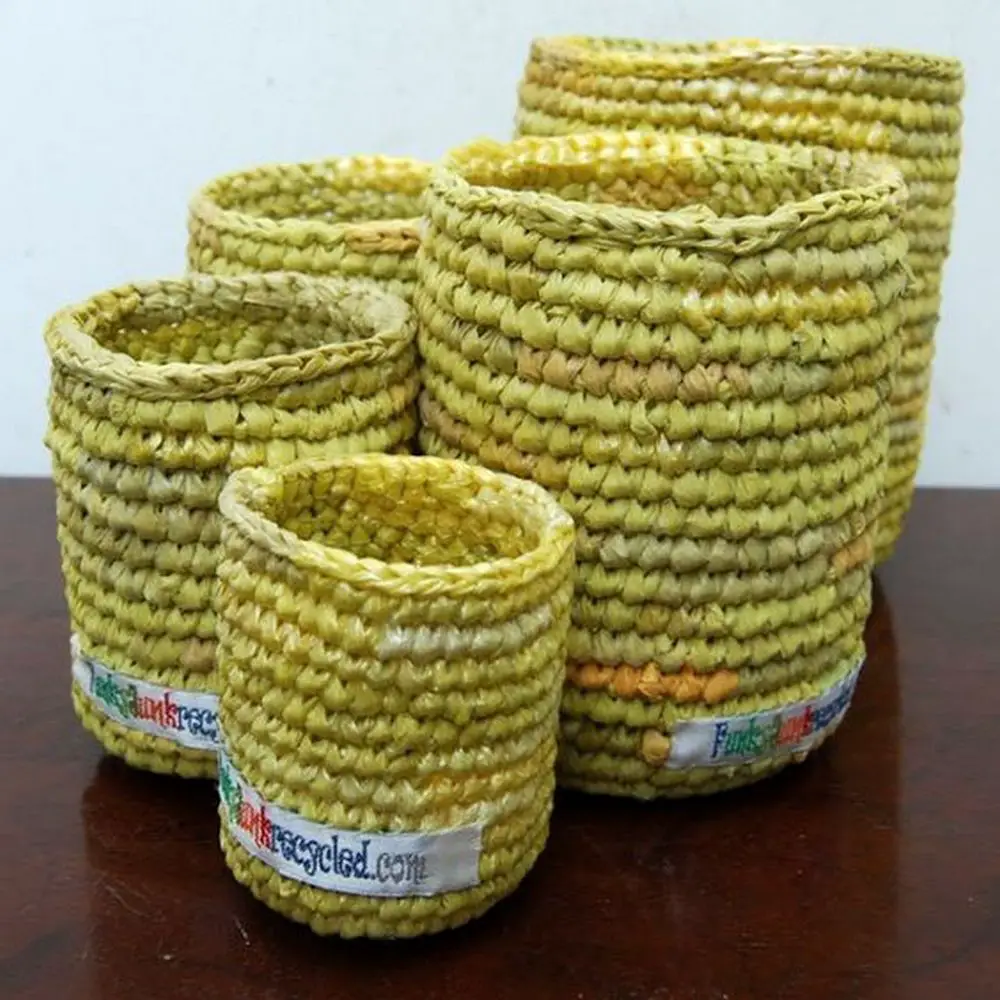

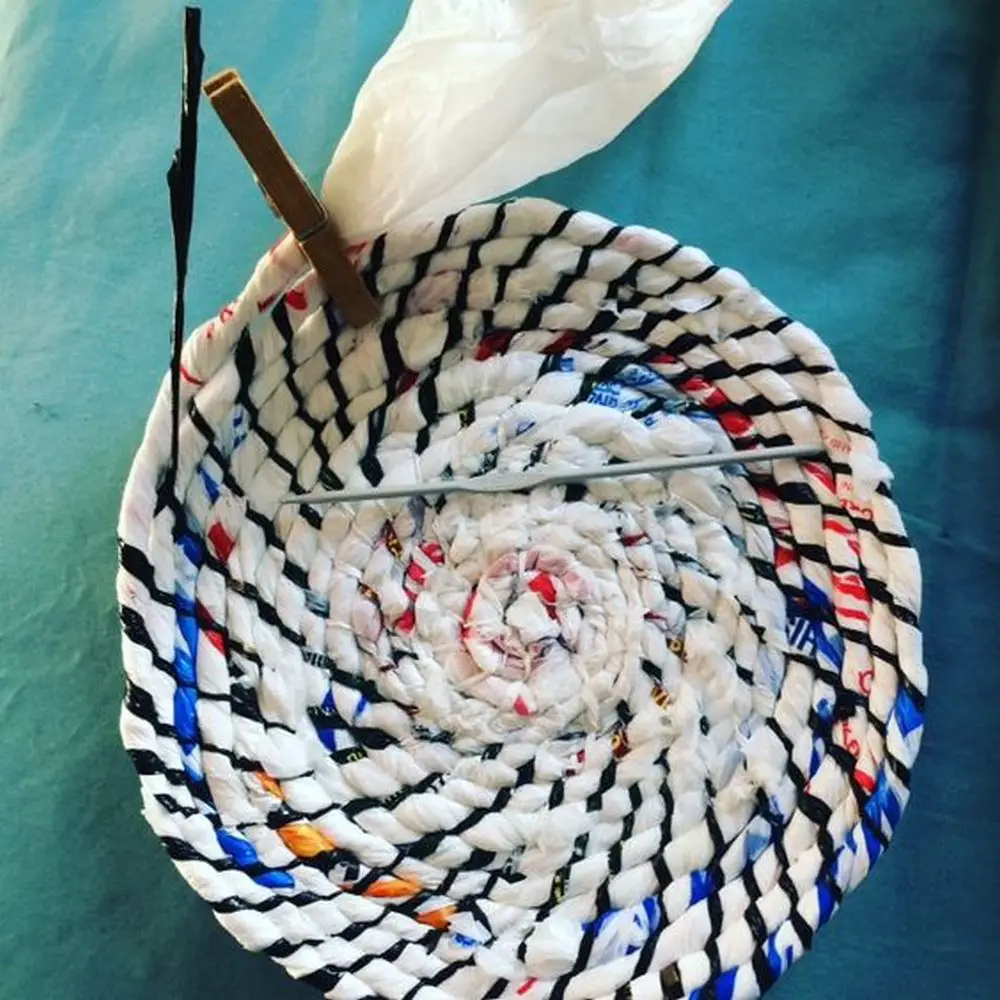

Check out the video below for a visual guide.
Challenges and Solutions
Crafting plastic bag baskets is a rewarding endeavor that combines creativity with sustainability. However, like any DIY project, it can present some challenges, particularly for those new to working with unconventional materials like plastic bags.
Here are common hurdles you might encounter when making plastic bag baskets and effective solutions to overcome them.
Inconsistent Plastic Strips
- Challenge: Cutting consistent strips from plastic bags can be difficult, leading to uneven weaving and a less stable basket.
- Solution: Use a cutting mat and rotary cutter to achieve uniform strips. Create a template from cardboard to guide your cuts, ensuring each strip is the same width. This consistency will make the weaving process smoother and the finished basket more symmetrical and sturdy.
Difficulty in Handling Materials
- Challenge: Plastic bags can be slippery and hard to manage, especially when weaving intricate patterns or securing ends.
- Solution: Increase your grip and control by wearing gloves with a textured surface, like gardening gloves. They help handle the plastic more easily. Additionally, use clips or clothespins to hold parts of the basket in place as you work.
Weak Structural Integrity
- Challenge: Some plastic bag baskets may end up too flimsy, unable to hold shape or carry weight.
- Solution: Double up the plastic strips to make them thicker, or use a double weaving technique where two strips are used as one. Consider weaving around a frame made from a sturdier material, like wire, to enhance structural integrity.
Knots and Joining Issues
- Challenge: Knots from tying strips together can protrude, making the basket less attractive and potentially snagging on items.
- Solution: Position knots strategically so they can be hidden within the weave, or choose a joining technique that overlaps strips instead of tying them. Melting the ends slightly to fuse them together is another option, but it requires careful handling to avoid burns and ensure a clean look.
Limited Design Variations
- Challenge: Achieving varied and interesting designs with plastic bags can be challenging due to material limitations.
- Solution: Experiment with different weaving patterns, such as twill or herringbone, to introduce texture and visual interest. Use plastic bags of different colors and transparency to play with color blocking and light effects. Incorporating other recyclable materials, like newspaper strips or fabric remnants, can also add diversity to your designs.
Environmental Concerns
- Challenge: While reusing plastic bags is environmentally friendly, the longevity and disposal of plastic bag baskets still pose ecological concerns.
- Solution: Promote the baskets as reusable items and encourage users to repair rather than discard them. For disposal, guide users on how to recycle the baskets properly, depending on local recycling facilities’ capabilities to handle plastic products.
Addressing these challenges enhances the overall experience and outcome of making plastic bag baskets, leading to more durable, attractive, and functional creations that you can be proud to display or give as gifts.
Variations in Basket Weaving Techniques
Weaving baskets from plastic bags not only offers a creative outlet but also serves as a meaningful way to recycle and repurpose everyday materials. As you embark on crafting your plastic bag baskets, you might enjoy exploring different weaving techniques that can add variety and uniqueness to your projects. Each method varies in complexity and appearance, giving your baskets distinct textures and forms.
Basic Over-Under Weave
The most traditional weaving technique involves a simple over-under pattern. This method is perfect for beginners making plastic bag baskets. Start by laying strips horizontally and vertically to form a grid. Weave each strip over one and under the next, alternating with each row. This classic approach creates a strong and flexible basket base and sides, suitable for general use.
Twill Weave
For a more decorative look, try the twill weave. In plastic bag baskets, this technique can add an elegant diagonal ribbing effect. Weave the plastic strips by going over two strips and under two strips, shifting one strip over with each new row. The pattern creates a more textured and visually interesting surface, ideal for display pieces or special occasion baskets.
Coiling Technique
Coiling is another distinctive style that results in a rounded, smooth appearance for plastic bag baskets. This method involves wrapping plastic strips around a core material, such as thicker bundled plastic bags or a cord, and then coiling this wrapped cord in a spiral. Secure each round to the previous with stitches or knots. This technique is excellent for crafting rounded, sturdy baskets with a continuous, seamless look.
Herringbone Pattern
The herringbone pattern introduces a zigzag twist to plastic bag baskets, offering a dynamic and modern aesthetic. To achieve this, alternate the direction of the over-and-under weave every few strips or rows, creating a V-shaped pattern. This method can be a bit more complex but yields visually striking results, making the baskets particularly eye-catching.
Random Weaving
For an artistic and informal style, random weaving allows for a free-form approach where you weave plastic strips in no specific order or pattern. This technique is great for using up odd-sized scraps from other plastic bag basket projects. The resulting baskets are unique, with each one having its own character and style, perfect for eclectic decor or as a playful storage solution.
By experimenting with these different weaving techniques, you can enhance your plastic bag basket projects, creating pieces that are not only functional but also beautiful works of art. Each technique offers a different aesthetic and strength level, allowing you to tailor your baskets to specific uses and preferences.
Decorative Ideas for Plastic Bag Baskets
Decorating your plastic bag baskets can transform them from simple storage solutions into stylish home accessories or thoughtful gifts. With a variety of creative embellishments, you can enhance the aesthetic appeal of your baskets and personalize them to suit any décor or occasion.
Here are some decorative ideas to inspire your next plastic bag basket project.
Add Colorful Patterns
Integrate colorful patterns into your plastic bag baskets by selecting plastic bags in various colors and designs. Plan your color placement before starting the weaving process to create stripes, chevrons, or block patterns. Mixing colors strategically can turn a basic basket into a vibrant centerpiece.
Use Fabric or Ribbon Accents
Incorporate elements like fabric strips, ribbons, or lace to add texture and contrast to your plastic bag baskets. Weave these materials into the basket alongside or on top of the plastic strips. Not only does this add color and interest, but it also gives the basket a softer, more refined look.
Attach Handles or Borders
Craft handles or decorative borders from materials like twine, yarn, or additional strips of plastic bags. You can braid or twist these materials for added durability and aesthetic appeal. Attaching sturdy handles can also make the baskets more functional, especially if used for shopping or carrying items.
Embellish with Beads or Buttons
For a playful touch, sew beads, buttons, or sequins onto the finished plastic bag basket. These can line the rim, form patterns on the sides, or highlight the basket’s base. Choose colors and styles that complement the basket’s design for a cohesive look.
Apply Decorative Stitches
Use embroidery thread to add decorative stitches to your plastic bag basket. Techniques like cross-stitch or blanket stitch not only reinforce the basket’s structure but also create beautiful, detailed accents. This is particularly effective on baskets with simpler weaves, where the stitching can take center stage.
Incorporate Natural Elements
Tie in elements from nature, such as dried flowers, small branches, or shells, to give your plastic bag baskets a rustic or beachy feel. These can be glued on or tied with thin cords, making the basket a perfect fit for garden settings or coastal-themed rooms.
By exploring these decorative techniques, you can elevate your plastic bag baskets from merely functional items to expressive pieces of decor. Each embellishment adds a layer of creativity and personalization, ensuring your baskets are not only useful but also visually appealing.
Conclusion
Making plastic bag baskets is an innovative way to recycle and repurpose plastic bags into something both functional and artistic. Through various weaving techniques and decorative ideas, these baskets can be tailored to fit any style or purpose, adding a unique touch to home decor or serving as thoughtful, handmade gifts. Embracing this eco-friendly project not only helps reduce waste but also sparks creativity in everyday crafting.

